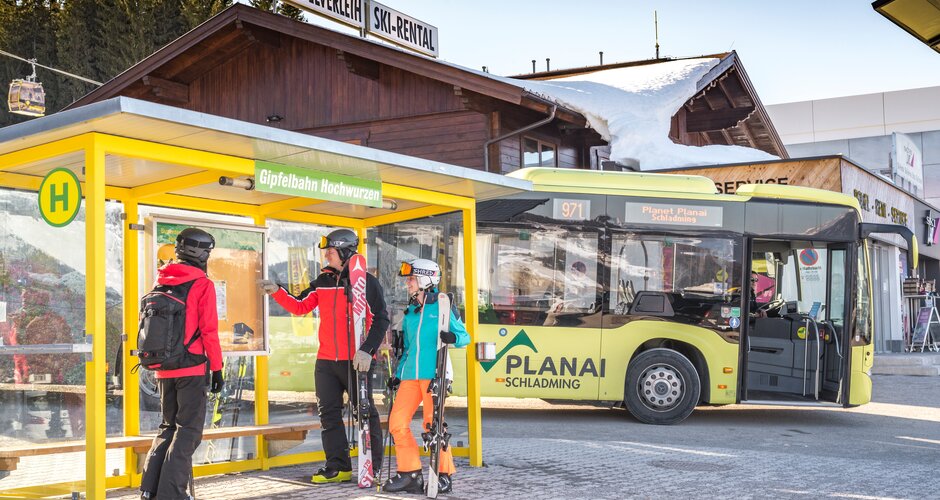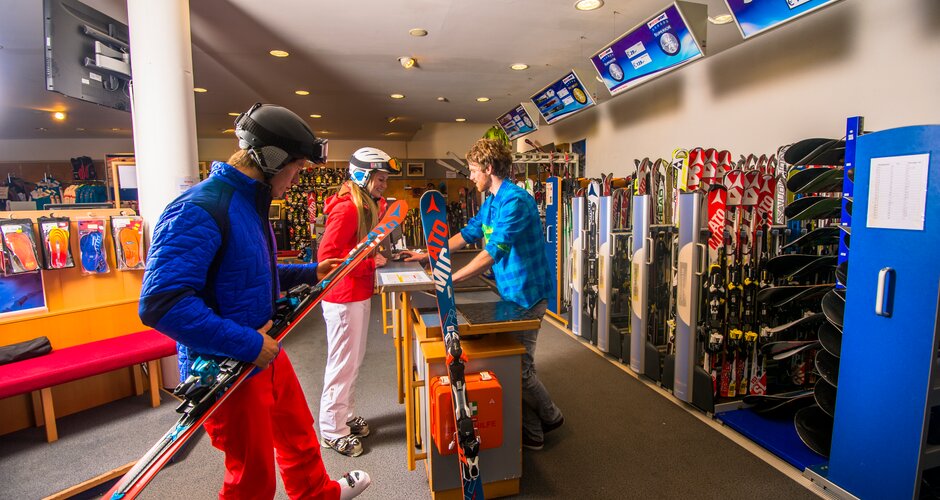One fundamental aspect is to organise your journey to the ski resort as sustainably as possible. For example, you can travel by public transport such as train or bus. On holiday, you can use the well-developed ski bus network to get from A to B. Some ski resorts in Ski amadé are even trialling electric buses.
In addition to the many accommodations that generally attach great importance to sustainability, there are now some hotels with one or more environmental badges. You can find a list of these on STAY Ski amadé.
When it comes to equipment, you should make sure that you use it for a sufficiently long time. This will prevent the need for constant replenishment and help to conserve resources. I have already mentioned in other articles that we have started to hire out equipment, at least for the children, as they constantly need something new due to their growth. The offers in Ski amadé are very good and now also cover the area of ski clothing. Especially if someone is spending their holiday in the ski area and winter clothing is not absolutely necessary, this is the perfect alternative - also in terms of luggage and summer storage.
A small contribution with a big impact is to use the keycard again for the next holiday. As all ski passes are now loaded onto the contactless card (with over one million arrivals per season - Ski amadé facts & figures), repeated use over many years can help to avoid a lot of waste.
In general, but especially in the great outdoors, care should be taken not to leave any rubbish behind or, for example, to refrain from travelling through marked young forests (a future resource for CO2 conversion), no matter how tempting it may be. The local flora and fauna will thank you.
Another crucial point is the gastronomy in the ski resorts. In Ski amadé, they are increasingly focussing on the purchase and processing of regional products and producers. In this way, together with the guests, a contribution is made to the sustainable cycle in the region and long transport routes are avoided. This conscious consumption helps to minimise the ecological footprint of the ski resorts and that of skiers.
In general, it is not only the responsibility of the ski resorts to make skiing more sustainable, but also of each individual skier. A love of the mountains should go hand in hand with respectful behaviour and an awareness of the ecological impact. Sustainable skiing is not only a contribution to environmental protection, but also an investment in the future of this wonderful winter sport in an intact and breathtaking natural environment. Because we also want to give our children and their children the same experience, enjoyment and pleasure that drives us to our local mountains all year round.





